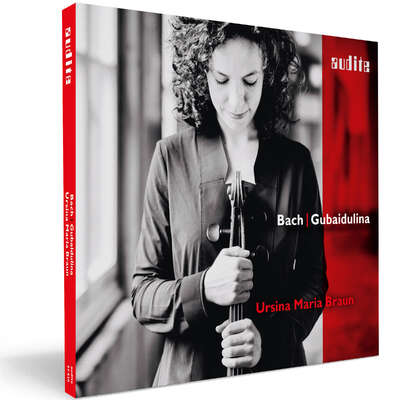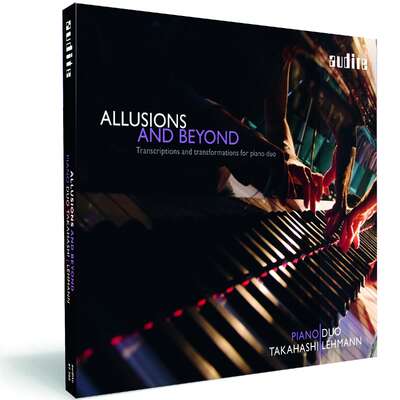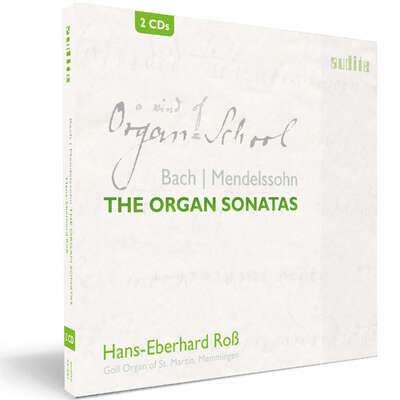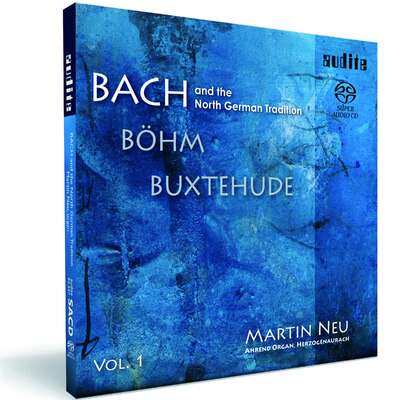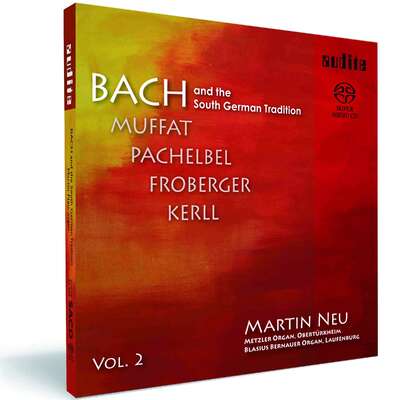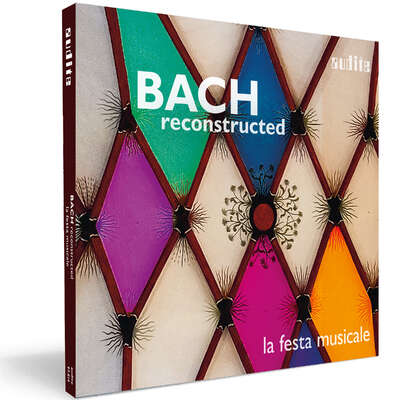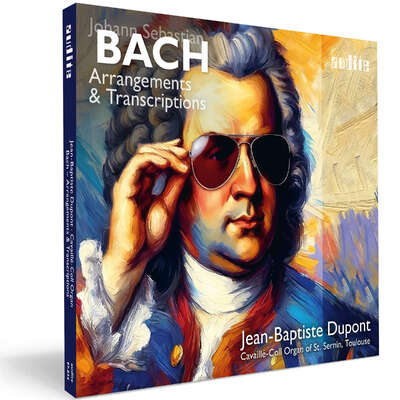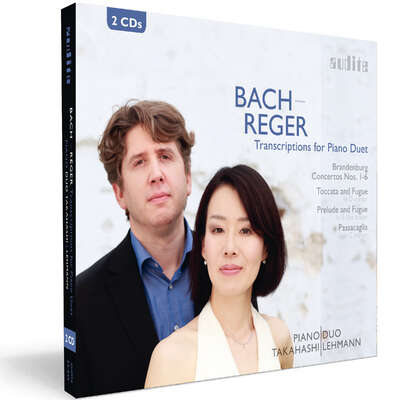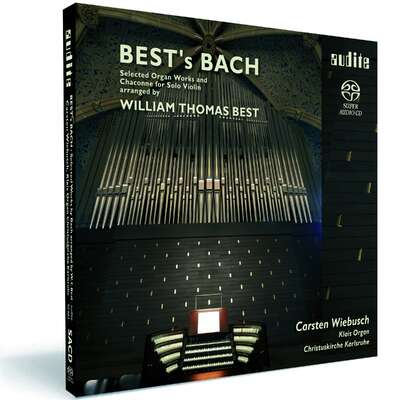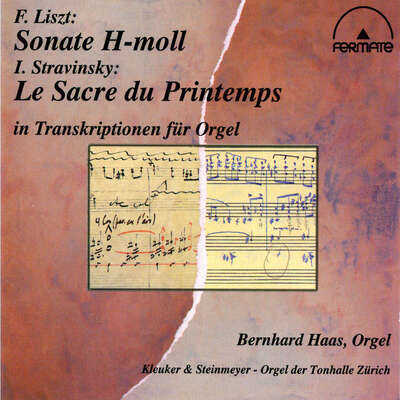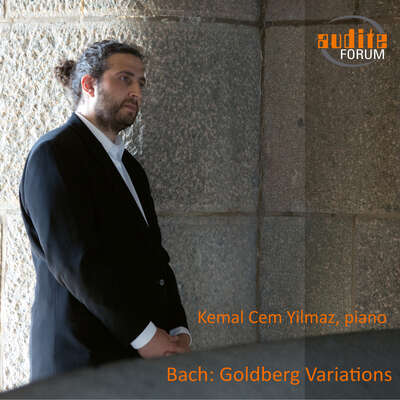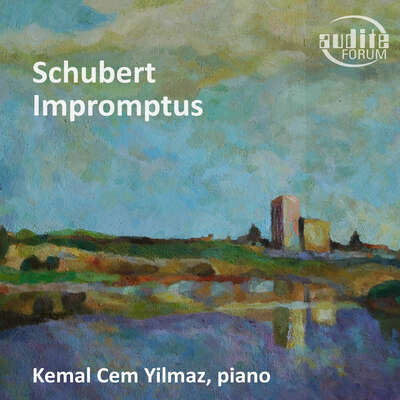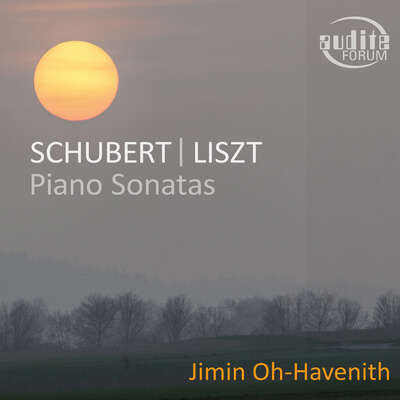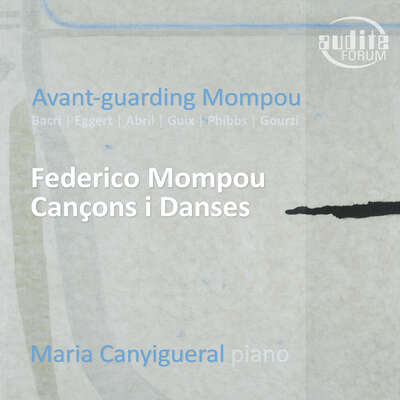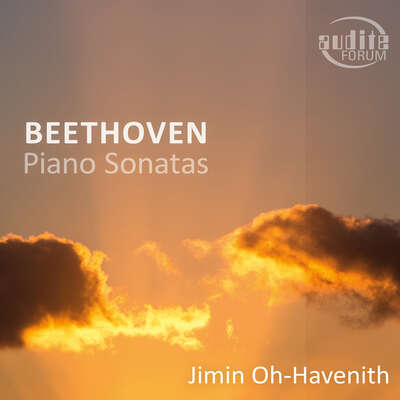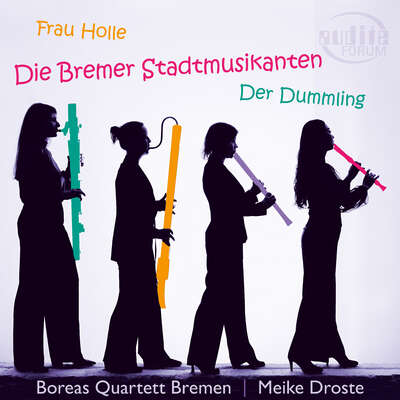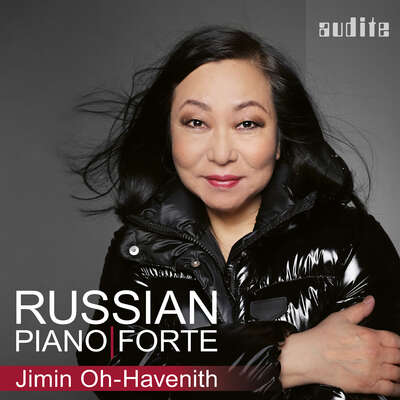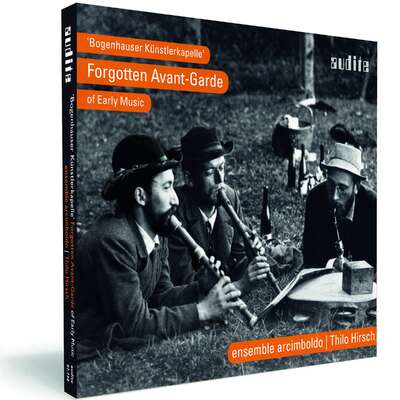
An exciting listening adventure: The "Ten Preludes" by Sofia Gubaidulina from 1974 merge with the Allemandes from Johann Sebastian Bach's Cello Suites into a fascinating dialogue between past and present.more
"Even though these are many small musical morsels, Braun knows how to shape them in such a way that they create appetizing and constantly fresh impressions. Listening to the complete suite, it becomes clear that her interpretation of Bach is characterized by creative attention to detail rather than a broad presentation." (Pizzicato)
Track List
This bonus track is only available as a download!
Details
| Bach & Gubaidulina | |
| article number: | 97.830 |
|---|---|
| EAN barcode: | 4022143978301 |
| price group: | BCA |
| release date: | 10. October 2025 |
| total time: | 74 min. |
Bonus Material
Informationen
How do different kinds of music from distant eras interact with one another - and with the listener? This encounter between the past and modernity presented on this album proves to be an exciting listening adventure: The Ten Preludes by the Russian composer Sofia Gubaidulina (1931-2025) are interwoven with Allemandes from Johann Sebastian Bach's Cello Suites into a fascinating dialogue spanning 250 years.
Reviews
Gramophone | 10.11.2025 | Richard Whitehouse | November 10, 2025 | source: https://www.gram...
Ursina Maria Braun clearly, and rightly, has no qualms about integrating music from the past and ‘present’ in a through-running continuity. SofiaMehr lesen
Gubaidulina’s alternately combative then soulful First Prelude heads into a leisurely take on the ruminative Allemande from Bach’s Sixth Suite – setting up a temporal dialogue such as continues with the speculative and vehement Sixth and Seventh Preludes, the latter’s impetus pursued rather more equably in the Second Suite’s Allemande. This is duly countered by the respectively quizzical, deadpan then hymnic Seventh, Ninth and Third Preludes, prior to the geniality of the Second Suite’s Allemande. The quixotic Second Prelude makes for pointed contrast with the Fourth Suite’s amiable Allemande, as also the haunting then shuddering Fifth and Fourth (aptly entitled ‘Ricochet’) Preludes. The First Suite’s Allemande provides an elegant foil to the 10th Prelude that, in expressive terms at least, is a tangible culmination.
Braun’s proceeding with a complete Fifth Suite makes sense insofar as this is the most wide-ranging emotionally of the set, even though its trenchant Allemande may be less memorable than its impetuous Prelude or searching Sarabande. Those preferring a stand-alone version should find Thomas Demenga an imaginatively coupled choice, with Boris Pergamenschikow equally attuned to the many subtleties of the Preludes. Yet taken overall, Braun’s concept has much going for it and not least with the First Suite’s indelible Prelude as a bonus download.
ET SONA - HIFI & MÚSICA | 4 nov 2025 | Fernando Alday | November 4, 2025 | source: https://www.et-s...
El nuevo lanzamiento de Audite consolida a la chelista y compositora suiza Ursina Maria Braun (Egg, 1992) como una de las intérpretes más lúcidasMehr lesen
La obra articula las Allemandes de Bach con los Diez Preludios (1974) de Sofia Gubaidulina, creando un tejido de resonancias que transita entre lo festivo y lo místico. Braun no busca contraste, sino propósito: cada pieza se convierte en un umbral hacia la siguiente, donde la pureza contrapuntística de Bach se refleja en el lenguaje fragmentario y simbólico de Gubaidulina.
Su sonido, controlado pero vibrante y pleno de textura, revela una comprensión profunda del espacio acústico. La grabación de Audite, de impecable nitidez, permite percibir la respiración del instrumento y la arquitectura del silencio que Braun construye a su alrededor con cada trazo del arco. No hay complacencia: sólo una búsqueda de sentido a través del timbre y la proyección de cada frase.
Este registro trasciende el mero virtuosismo para situarse en el terreno de la meditación sonora. La escucha repetida no agota su materia; al contrario, revela nuevas capas de intención y de textura. En tiempos de saturación auditiva, Braun ofrece un ejemplo de contención y profundidad.
Disponible en múltiples formatos a través de Audite, es un documento interpretativo de alto valor, donde la técnica se pone al servicio de una visión: la del cello como instrumento de revelación más que de exhibición.
Diapason | N° 749 - Novembre 2025 | Jérémie Bigorie | November 1, 2025
Alternant Préludes de Goubaïdoulina et Allemandes de Bach, Ursina Maria Braun fait dialoguer deux créateurs pour qui la composition est un acteMehr lesen
On pourra toujours chicaner ici sur le manque de rebond du staccato (n° 2),là sur un ricochet gluant (n° 4), ailleurs sur un coup d'archet bien gras (n° 8), surtout en comparaison de l'intimidante réalisation de Pieter Wispelwey (Channel Classics, 2004). Du moins Braun met-elle constamment l'accent sur la narration. Les Allemandes de Bach, subtilement enchaînées (correspondances, échos de gestes, notes pivots, etc.), encourent parfois le risque d'une ligne discontinue et d'un manque de légèreté, attachées qu'elles semblent à ne point styliser les rythmes de danse. Jouée dans son intégralité sur un instrument ancien (Edward Pamphilon du XVIIe siècle) à la projection plus limitée, la Suite n° 5 manifeste une décantation spirituelle en parfaite accordance avec l'esprit de l'album.
www.pizzicato.lu | 10/10/2025 | Uwe Krusch | October 10, 2025 | source: https://www.pizz... Auf dem Weg zur Vervollkommnung
Betrachtet man musikalische Übungen, beispielsweise Etüden oder zyklische Werkgruppen, als Handlungen zu geistiger Ausformung und nicht nur alsMehr lesen
In jedem Prelude von Gubaidulina wird auf eine Spieltechnik fokussiert und damit ein Abbild heutiger Cellotechniken sichtbar. Auch in diesen Gelegenheitswerken wird ihre individuelle Ausrichtung zu Konzentration und Innerlichkeit sichtbar. Aus der Kombination von Technik und ausdrucksvollem Inhalt schafft sie so vielfältige und ausdrucksstarke Stücke.
Die Cellistin Ursina Maria Braun verknüpft von Bach die 5. Cellosuite sowie Auszüge aus den anderen aus dem 18. Jahrhundert mit den zehn Préludes für Cello von Sofia Gubaidulina aus dem 20. Jahrhundert. Dabei findet sie die gemischte Reihenfolge über gemeinsame Elemente der Werke, die eine Anknüpfung für die Anordnung bieten. Die so geschaffenen Kontraste kostet Braun in ihrer Interpretation gekonnt aus. Das abwechslungsreiche Bild wird auch noch dadurch geschärft, dass sie die 5. Suite auf einem Cello mit Darmsaiten, alle anderen Sätze auf einem modernen Instrument spielt.
Auch wenn es sich um viele kleine Musikhäppchen handelt, weiß Braun diese so zu formen, dass appetitliche und immer wieder frische Eindrücke entstehen. Bei der kompletten Suite wird deutlich, dass ihre Idee von Bach durch gestaltende Detailarbeit und nicht durch flächige Präsentation geprägt ist.
Das Miteinander dieser beiden Cellosolozyklen vermittelt eine zwanglose Vereinigung der beiden so unterschiedlichen Stile, die ein gleichzeitig angenehmes wie auch interessantes Hinhören erlaubt.
English Translation:
If one considers musical exercises, such as études or cyclical groups of works, as acts of intellectual formation and not merely as technical exercises, then one may understand their performance as a path to a higher level or essence, in this case music, quasi as a religious act.
Each of Gubaidulina’s preludes focuses on a particular playing technique, thus reflecting contemporary cello techniques. Even in these occasional works, her individual focus on concentration and inwardness is evident. By combining technique and expressive content, she creates diverse and expressive pieces.
Cellist Ursina Maria Braun combines Bach’s 5th Cello Suite and excerpts from his other 18th-century works with Sofia Gubaidulina’s ten Préludes for cello from the 20th century. She finds the mixed order through common elements in the works, which provide a link for the arrangement. Braun skillfully exploits the contrasts thus created in her interpretation. The varied picture is further sharpened by the fact that she plays the 5th Suite on a cello with gut strings and all other movements on a modern instrument.
Even though these are many small musical morsels, Braun knows how to shape them in such a way that they create appetizing and constantly fresh impressions. Listening to the complete suite, it becomes clear that her interpretation of Bach is characterized by creative attention to detail rather than a broad presentation.
The combination of these two cello solo cycles conveys a casual union of two very different styles, making for a listening experience that is both pleasant and interesting.

